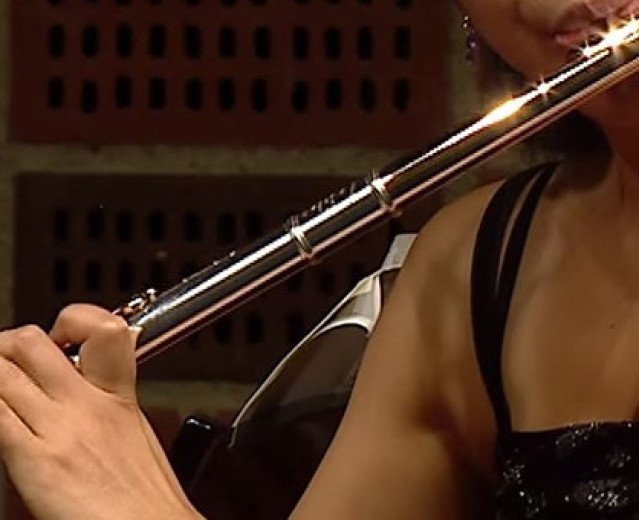The Flute
The traverse flute or more commonly known as western flute is normally made from metal.
The
instrument is comprised of 3 parts:
- Head joint
- Body
- Foot joint
It is cylindrically shaped in the body and in the foot joint, slightly conical in the head joint and about 63cm long. Generally the flute is constructed of silver plated nickel silver, but the most precious an best sounding instruments are made of silver, gold and platinum.
The note range of the concert flute spans from the middle C (C3) up to C6, totalling
about 3 octaves, even if some modern flutes can reach 3 octaves and a half, and
some professional flautists are able to play up to C7

Note range of the traverse flute in C
The Flute sounds clear and bright, with a voice that makes it perfect to imitate, for instance, the singing of the birds, a quality used in many compositions by important musicians like Vivaldi, Beethoven and Prokofiev.
The flautist plays by blowing air in the hole on the head joint called embouchure hole and acting on a different number of keys that can be opened or closed. These keys open and close the holes in the body of the instrument, changing the air column length inside the instrument itself and consequently the pitch of the notes.
The flute’s family is comprised of many siblings:
the
piccolo
(in C), the soprano (in G), the concert flute (in C, the most common one), the tenor (in Bb), the contralto (in G), the bass (in C), the contrabass (in G), the Contrabass (in C), the Subcontrabass flute (in G), the
Subcontrabass (in C) and the Hyper-bass flute (in C).
Next step: Clarinet

